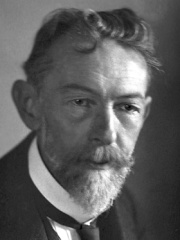
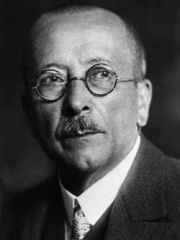
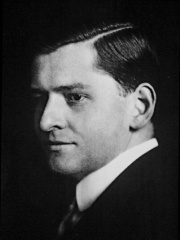

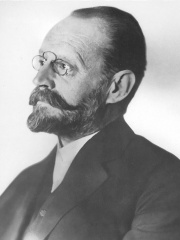
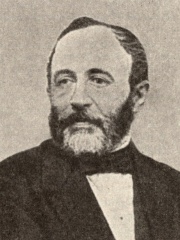
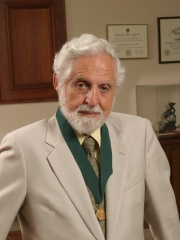
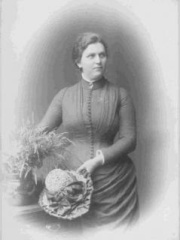
The Most Famous
CHEMISTS from Austria
This page contains a list of the greatest Austrian Chemists. The pantheon dataset contains 602 Chemists, 9 of which were born in Austria. This makes Austria the birth place of the 10th most number of Chemists behind Switzerland, and Japan.
Top 9
The following people are considered by Pantheon to be the most legendary Austrian Chemists of all time. This list of famous Austrian Chemists is sorted by HPI (Historical Popularity Index), a metric that aggregates information on a biography's online popularity.

1. Richard Adolf Zsigmondy (1865 - 1929)
With an HPI of 76.66, Richard Adolf Zsigmondy is the most famous Austrian Chemist. His biography has been translated into 64 different languages on wikipedia.
Richard Adolf Zsigmondy (Hungarian: Zsigmondy Richárd Adolf; 1 April 1865 – 23 September 1929) was an Austrian-born chemist. He was known for his research in colloids, for which he was awarded the Nobel Prize in Chemistry in 1925, as well as for co-inventing the slit-ultramicroscope, and different membrane filters. The crater Zsigmondy on the Moon is named in his honour.

2. Fritz Pregl (1869 - 1930)
With an HPI of 76.46, Fritz Pregl is the 2nd most famous Austrian Chemist. His biography has been translated into 61 different languages.
Fritz Pregl (Slovene: Friderik Pregl; 3 September 1869 – 13 December 1930), was a Slovenian-Austrian chemist and physician from a mixed Slovene-German-speaking background. He won the Nobel Prize in Chemistry in 1923 for making important contributions to quantitative organic microanalysis, one of which was the improvement of the combustion train technique for elemental analysis.

3. Richard Kuhn (1900 - 1967)
With an HPI of 72.54, Richard Kuhn is the 3rd most famous Austrian Chemist. His biography has been translated into 60 different languages.
Richard Johann Kuhn (German pronunciation: [ˈʁɪçaʁt ˈkuːn] ; 3 December 1900 – 31 July 1967) was an Austrian-German biochemist who was awarded the Nobel Prize in Chemistry in 1938 "for his work on carotenoids and vitamins".

4. Max Perutz (1914 - 2002)
With an HPI of 70.72, Max Perutz is the 4th most famous Austrian Chemist. His biography has been translated into 59 different languages.
Max Ferdinand Perutz (19 May 1914 – 6 February 2002) was an Austrian-born British molecular biologist, who shared the 1962 Nobel Prize for Chemistry with John Kendrew, for their studies of the structures of haemoglobin and myoglobin. He went on to win the Royal Medal of the Royal Society in 1971 and the Copley Medal in 1979. At Cambridge he founded and chaired (1962–79) The MRC Laboratory of Molecular Biology (LMB), fourteen of whose scientists have won Nobel Prizes.
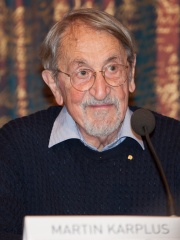
5. Martin Karplus (1930 - 2024)
With an HPI of 66.44, Martin Karplus is the 5th most famous Austrian Chemist. His biography has been translated into 53 different languages.
Martin Karplus (German: [ˈmaʁtiːn ˈkaʁplʊs]; March 15, 1930 – December 28, 2024) was an Austrian and American theoretical chemist. He was the Theodore William Richards Professor of Chemistry at Harvard University. He was also the director of the Biophysical Chemistry Laboratory, a joint laboratory between the French National Center for Scientific Research and the University of Strasbourg, France. Karplus received the 2013 Nobel Prize in Chemistry, together with Michael Levitt and Arieh Warshel, for "the development of multiscale models for complex chemical systems".

6. Carl Auer von Welsbach (1858 - 1929)
With an HPI of 66.36, Carl Auer von Welsbach is the 6th most famous Austrian Chemist. His biography has been translated into 32 different languages.
Carl Auer von Welsbach (1 September 1858 – 4 August 1929), who received the Austrian noble title of Freiherr Auer von Welsbach in 1901, was an Austrian scientist and inventor, who separated didymium into the elements neodymium and praseodymium in 1885. He was also one of three scientists to independently discover the element lutetium (which he named cassiopeium), separating it from ytterbium in 1907, setting off the longest priority dispute in the history of chemistry. He had a talent not only for making scientific advances, but also for turning them into commercially successful products. His work on rare-earth elements led to the development of the ferrocerium "flints" used in modern lighters, the gas mantle that brought light to the streets of Europe in the late 19th century, and the metal-filament light bulb. He took the phrase plus lucis, meaning "more light", as his motto.

7. Franz-Joseph Müller von Reichenstein (1740 - 1825)
With an HPI of 65.38, Franz-Joseph Müller von Reichenstein is the 7th most famous Austrian Chemist. His biography has been translated into 22 different languages.
Franz-Joseph Müller, Freiherr von Reichenstein or Franz-Joseph Müller von Reichenstein (1 July 1740 or 4 October 1742 – 12 October 1825 or 1826) was an Austrian mineralogist and mining engineer. Müller held several positions in the Habsburg monarchy administration of mines and coinage in the Banat, Transylvania, and Tyrol. During his time in Transylvania he discovered tellurium in 1782. In his later career he became a member of the imperial council in Vienna and was knighted and elevated to the rank Freiherr in 1820.

8. Carl Djerassi (1923 - 2015)
With an HPI of 61.84, Carl Djerassi is the 8th most famous Austrian Chemist. His biography has been translated into 31 different languages.
Carl Djerassi (October 29, 1923 – January 30, 2015) was an Austrian-born Bulgarian-American pharmaceutical chemist, novelist, playwright and co-founder of Djerassi Resident Artists Program with Diane Wood Middlebrook. He is best known for his contribution to the development of oral contraceptive pills, nicknamed the "father of the pill".

9. Ida Freund (1863 - 1914)
With an HPI of 55.08, Ida Freund is the 9th most famous Austrian Chemist. Her biography has been translated into 20 different languages.
Ida Freund (5 April 1863 – 15 May 1914) was the first woman to be a university chemistry lecturer in the United Kingdom. She is known for her influence on science teaching, particularly the teaching of women and girls. She wrote two key chemistry textbooks and invented the idea of baking periodic table cupcakes, as well as inventing a gas measuring tube, which was named after her.
People
Pantheon has 9 people classified as Austrian chemists born between 1740 and 1930. Of these 9, none of them are still alive today. The most famous deceased Austrian chemists include Richard Adolf Zsigmondy, Fritz Pregl, and Richard Kuhn.
Deceased Austrian Chemists
Go to all RankingsRichard Adolf Zsigmondy
1865 - 1929
HPI: 76.66
Fritz Pregl
1869 - 1930
HPI: 76.46
Richard Kuhn
1900 - 1967
HPI: 72.54
Max Perutz
1914 - 2002
HPI: 70.72
Martin Karplus
1930 - 2024
HPI: 66.44
Carl Auer von Welsbach
1858 - 1929
HPI: 66.36
Franz-Joseph Müller von Reichenstein
1740 - 1825
HPI: 65.38
Carl Djerassi
1923 - 2015
HPI: 61.84
Ida Freund
1863 - 1914
HPI: 55.08
Overlapping Lives
Which Chemists were alive at the same time? This visualization shows the lifespans of the 9 most globally memorable Chemists since 1700.

